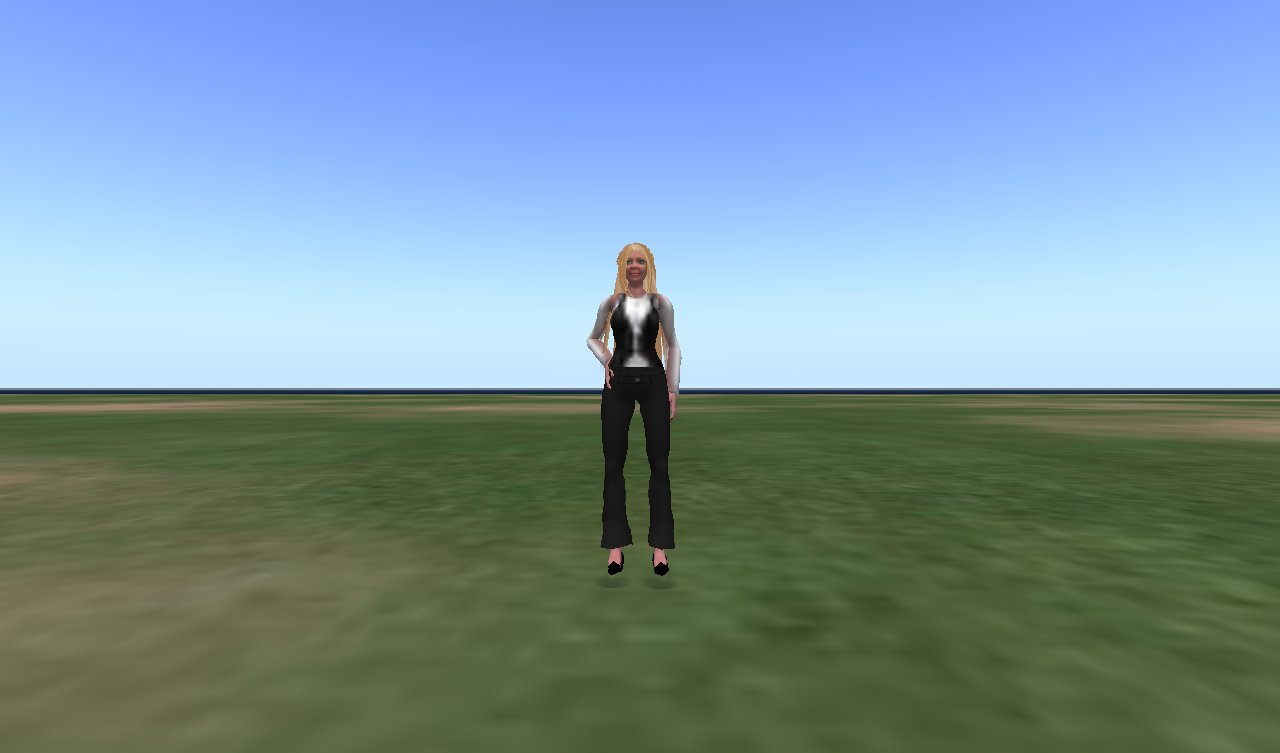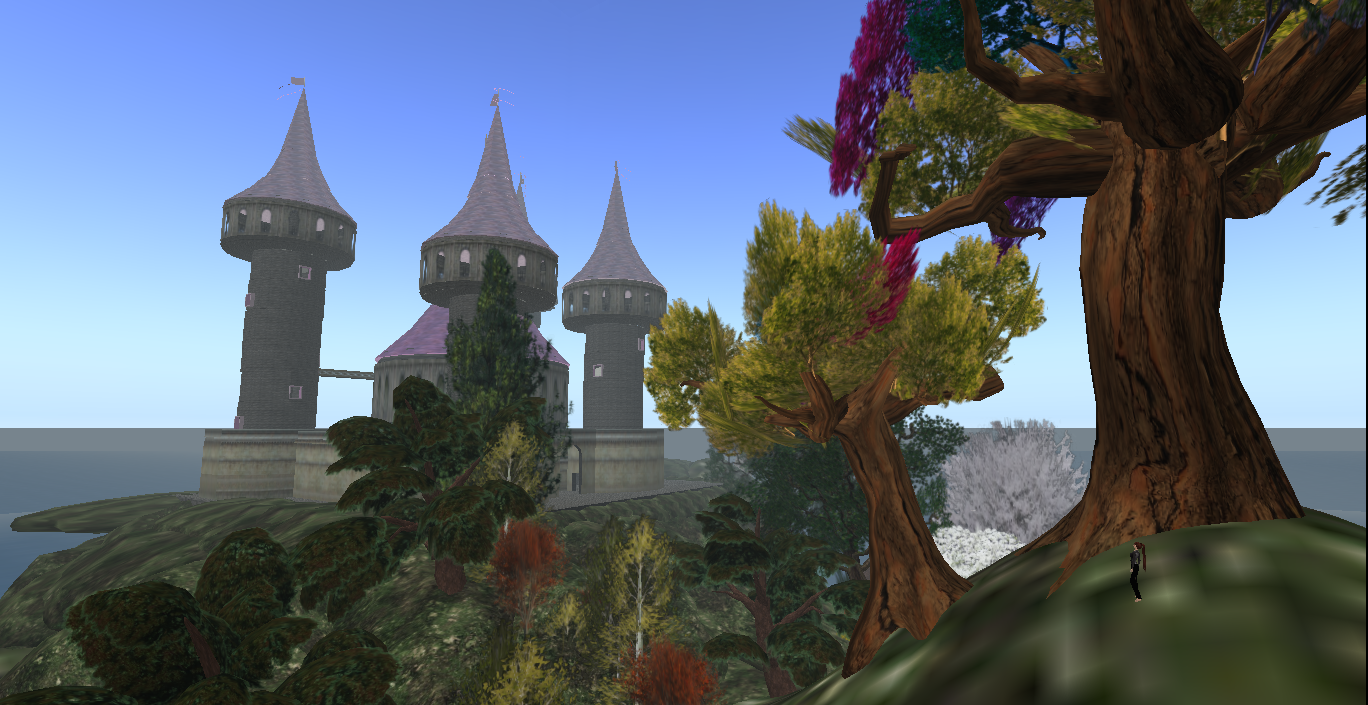If you like building — or need to build for your work or school — and you find Second Life cramped and expensive, OpenSim is a great option.
But where do you start? There are over a hundred active public grids, dozens of hosting providers… for someone new to OpenSim, there’s so much to learn, it can make you head spin.
So here’s the breakdown.
If you don’t want visitors
If you’re just building for yourself, or to create machinima, or 3D presentations, then your best bet is Sim-on-a-Stick. It’s a nicely packaged, pre-configured easy-to-install version of OpenSim created by Ener Hax based on the Diva Distro distribution of OpenSim.
And, yes, as the name suggests, you can run it off of a USB stick.

You can have as many regions as your computer — or USB sticks — can hold. For free. And you own it 100 percent.
It’s like writing a book using Word. Yes, Microsoft owns Word — but you own the book you write. If you’re the kind of writer who plagiarizes, well, it’s your own problem — and it’s going to catch up with you eventually, and destroy your career, so don’t do it. Similarly, when you run your own OpenSim, you and you alone are responsible for respecting copyright. And there’s no terms of service except for what you create for yourself. It’s maximum freedom, maximum control at the lowest cost.
If you want to have no border crossings, stick with the default four-region megaregions. In fact, you can add more regions and make nine-region or even 16-region megaregions — great for wide landscapes and vehicles.
If you want to save individual regions as OAR files to share with your colleagues, other educators, or the general public (like Linda Kellie is doing with her fantastic builds) then stick with individual regions. You can always connect them up into megaregions later, if you want.
Linda Kellie make her builds on OpenSim running on her home computer, then exports them as XML file or entire region exports in the form of OAR files, and uploads them to her website for anyone to use.
You can also use these OpenSim regions as manufacturing and warehousing areas for goods you plan to sell on other grids. Just save them as individual objects using the Imprudence viewer, them upload them to Second Life, InWorldz, Avination, or any other commercial grid. Some grids may also allow up to upload entire OAR files.
If you want only a few selected visitors
First of all, there’s nothing keeping you from taking your Sim-on-a-Stick or Diva Distro and hypergrid enabling it, so that folks can teleport in and visit you whenever your computer is running OpenSim. Â Nothing, that is, except having to configure your router.
If you don’t have a router — if your computer is the only one in your house and it connects directly to your cable Internet or DSL modem — then all you need is your IP address and a little time editing your configuration files. This might take anywhere from a few minutes to a couple of hours. You can get help at the OpenSim chat channel or the OSGrid chat channel. It’s not too bad, and a non-techie can do it.
If you have a router, you will need to set up port forwarding. A non-techie can do it (I did) but expect to dedicate at least a couple of weekends to the job (that’s how long it took me), with lots of help from the chat channels, lots of frustration, and possibly a trip to the store to buy a different router.
One you do all that, though, you can also connect your regions to OSGrid, ScienceSim, or any other open grid.
Linda Kellie recently connected her region up to OSGrid, though it took the help of her techie husband to make the final connection.
Keep in mind that with a home-based region, you can only support as many visitors as your broadband connection can handle — usually no more than a handful at a time. And folks can’t visit your region if your computer is turned off. Or you’re doing something else with it, and not running OpenSim.
You’re also responsible for your own backups, upgrades, restarts, troubleshooting, and keeping an eye on your IP address.
But, on the plus side, it’s free.
If you want someone else to do the technical stuff
Do you want to have your own region, right now, without any downloads or MySQL installs or editing configuration files? Go to Kitely, click on “Login with Facebook” — yes, you need a Facebook account — and click on “New World”, type its region name, and hit “Create.”
That’s it. In the time it took me to type that, you’d have your first region. For free. Now click on the name of the newly created region and hit “Enter world” — and, as soon as Kitely installs its little plugin and loads up your viewer, you’re in. Standing on your little island.
Want to start out with something a little nicer? After clicking on “New World” you can also upload one of Linda Kellie’s OAR files, or any other OAR you happen to have sitting around your hard drive.
With your free region, you get two hours of free access a month. For $5, you can have two regions, and up to 25 hours in-world a month. Each new region you add to the plan is just 10 cents a month. No kidding — 10 cents. And these are 100,000-prim capacity regions that can hold up to 100 avatars. Fully backed up. Running the latest OpenSim. With mesh and media-on-a-prim and Vivox voice. And one-click OAR exports.
Kitely currently has the best interface out there for OpenSim. It’s ridiculously easy, and ridiculously cheap.

But they’re not (yet) hypergrid enabled and don’t (yet) have in-world shopping or any other login options besides Facebook. All those are coming, but if they’re deal breakers, consider renting land on OSGrid or other public grid instead.
For builders, your best bet are hosting companies that work independently of any particular grid and that allow you full ownership rights and full control — it’s like having a website with a Web hosting provider. You can move your regions from one vendor to another at any time, make backups and copies of your regions, and you retain all responsibility for copyright and other issues — just as if you were running your own Website. Pick any of the vendors on the left column of our hosting vendors page. Dreamland Metaverse in particular has been making a name for itself lately with a simple Web-based management interface, reasonable prices, and good support.
That’s the company Linda Kellie uses for her public region on OSGrid, and she’s reported a positive experience with their support and usability.
Vendors like Dreamland Metaverse can set you up with a completely private mini-grid (no outside access at all), or a grid where you can create accounts for your friends, colleagues, or students. They can also make a mini-grid where people can create their own user accounts. You can also choose to enable or disable hypergrid connectivity, or connect your regions to an existing grid like OSGrid. And you can change your mind — you can turn off hypergrid when classes are in session, for example, or move your regions from one grid to another.
I’m not advising builders to build on closed, commercial grids like InWorldz because you can’t make backups of your regions, and because the grid owners can cut off your account at any time. In addition, land on closed grids tends to be the most expensive. Instead, if you need a presence on a closed grid, whether Second Life or InWorldz or Avination, I recommend building on a home-based region, on Kitely, or on a region run by a third-party hosting company, then uploading the content to the commercial grid for use or sale.
Then, if you decide to leave the grid, or the grid suddenly ceases operations (which has happened to many grids over the past couple of years), you haven’t lost all your work.
- Analysts predict drop in headset sales this year - March 25, 2025
- OSgrid enters immediate long-term maintenance - March 5, 2025
- OSgrid wiping its database on March 21: You have five weeks to save your stuff - February 15, 2025
